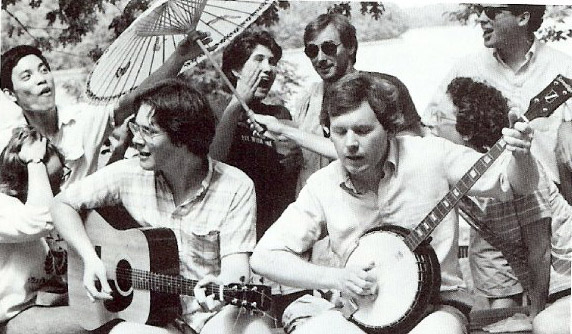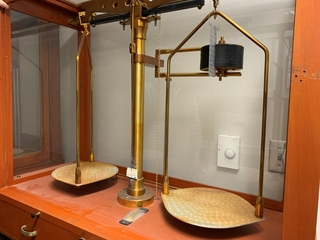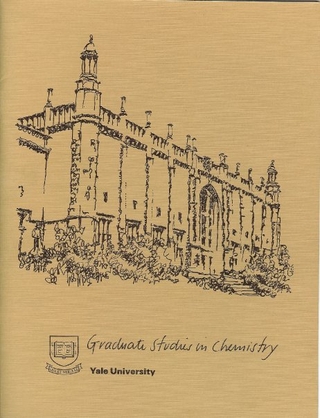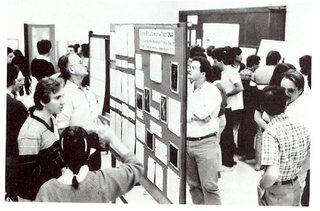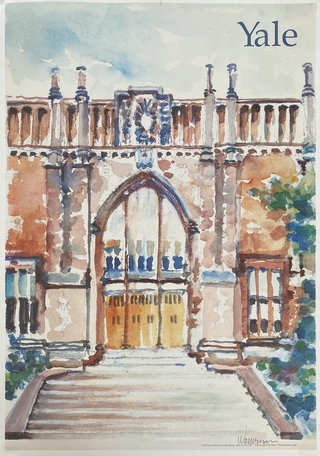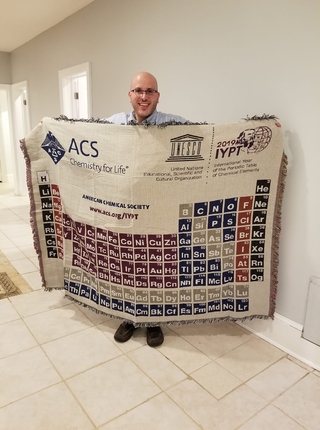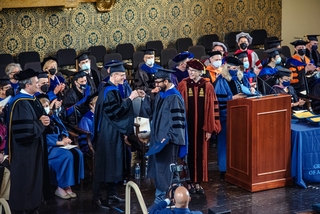1970s
Andrew Freedman ’71 B.S. is a principal scientist at Aerodyne Research, Inc.
John Stofko ’72 Ph.D. writes, “I came to the Yale Chemistry Department after receiving a B.S. degree in Chemistry from the University of Pennsylvania in 1967. At Yale, I worked under the direction of Prof. Martin Saunders in the area of NMR Studies of Hydride Shifts in Alkyl Carbonium Ions and Nitrogen Inversion Rates in Tertiary Amines. I received my PhD in 1972. After leaving Yale, I conducted post-doctoral research at the School of Molecular Sciences at the University of Warwick in Coventry, England. I worked for Profs. John Brown and Bernard Golding. In 1974, I began a second post-doctoral position at Caltech in Pasadena in the labs of Prof. Robert Bergman.
In 1976, I joined 3M as a Senior Research Chemist. My research career there lasted almost 34 years. I investigated materials used for producing visible images (electrophotography, ink jet printing, and pigments and dyes with improved stability) and in later years, researched coatings for the prevention of biofilms. I retired in 2007.
After retirement, I got involved in a program sponsored by the 3M Community Affairs Department with local schools to encourage interest in STEM careers. I also volunteered as a judge for regional and state Science Fairs. I continued activity with the local American Chemical Society.
The other big event in my life came after the U.S. Supreme Court allowed for same-sex marriage. I married my spouse (Kenn) in 2016. I first met him in 2021, and our relationship grew over the years. He is also retired now from his occupation as a Psyche Nurse!
We now live in a wonderful apartment building in downtown Minneapolis - NO MORE snow shoveling. We enjoy local music and theater. The Twins baseball, the Vikings football and the Timberwolves basketball venues are within walking distance. Soccer and Ice Hockey stadiums are a short commute away.
We enjoy travel (especially to warm places in the winter) when we have the time.
I am looking forward to attending the 101st Anniversary Celebration for the Sterling Chemistry Laboratory. Some of my friends will be there, and this event has prompted me to search out others from my time at Yale with whom I have lost contact.”
Kevin Peters ’75 Ph.D. is a professor emeritus of chemistry at the University of Colorado, Boulder.
Katherine Alben ’76 Ph.D. had roles as a research scientist for the NYS Department of Health from 1977-2017 (2020) and assistant professor at the University of Albany School of Public Health from 1990-2023. Now she dedicates her time to outdoor activities and her family.
Katherine Flynn ’76 M.S. earned her Ph.D. in organic chemistry from Northwestern. She has worked in agricultural products (Rohm & Haas), foods and beauty care (Procter & Gamble), and most recently, in pharma, where she is a senior director in Rare Diseases. Technical and competitive intelligence are her specialties now. AND most important, she’s been married for 32 years and has two fantastic, grown daughters.
When Nafsika E Georgopapadakou ’76 Ph.D. graduated Phi Beta Kappa (ΦΒΚ), the Greek acronym for ‘Love of Learning, Guide of Life’ (Φιλοσοφία Βίου Κυβερνήτης) from her undergrad, it was a huge honor for her. She embraced the idea wholeheartedly.
Then came Graduate School (Yale), postdoctoral training (Harvard), and a nomadic career in the pharmaceutical industry (Squibb, Roche, Dupont, biotechs) with brief stints in academia (Visiting Scientist at Princeton, Adjunct Professor at Temple). Yet, through it all, ‘Love of Learning’ remained her guide.
There were publications, invited talks, patents, books, and an interdisciplinary journal (Drug Resistance Updates) – now in its 26th year. Her research shifted from bio-organic chemistry to biochemistry and biology, focusing on drug action, resistance, and new drugs. She was extremely fortunate that her career was in the golden era of drug discovery.
Now in retirement, Nafsika shares some of her time with Yale as an Alumni Fund Volunteer, helping to secure gifts to support Chemistry.
Richard Jaffe ’72 Ph.D. writes: “I received my Ph.D. in Chemistry from Yale in ‘72. After my postdoc at the University of Rochester and NASA Ames Research Center (in Mountain View California), I became a staff research scientist there, where I remained as a research scientist until my retirement 44 years later in June of 2021. I was a founder of the computational chemistry research group there and worked primarily on predicting the heat loads spacecraft would encounter upon entering planetary atmospheres at hypersonic speeds.”
Peter M. Kroger ’78 Ph.D. has been a member of the technical staff of the Jet Propulsion Laboratory since 1983. Prior to that held postdoctoral positions at the University of Toronto and Brookhaven National Lab.
Bert Eshaghpour ’79 Ph.D. recently came back to Yale to judge the Three-Minute Thesis Competition. Bert is president of the Wego Chemical & Mineral Corporation.
1980s
Martin P. Karnett ’81 Ph.D. was elected to the prestigious Member, Group Technical Staff Technical Ladder at Texas Instruments, Inc. in 2021 and then senior member in 2023, in recognition of excellence in technical contributions. Titleholders are peer-elected based on demonstration of leadership, innovation, and initiative to contribute to the organization’s goals. He received the Texas Instruments Founders Community Impact Award in November 2019 for outstanding service to the community. The award honors TI’s founders and their long history of philanthropy and volunteerism.
James O’Neill 1982 B.A. has spent 23 years in semiconductor development at IBM. Now he is the CTO at Entegris, a specialty materials company serving the semiconductor industry.
Philip Cole ’84, a professor at Harvard Medical School, interim chief of the Division of Genetics at Brigham and Women’s Hospital, and associate editor of the Journal of Biological Chemistry, speaks about his research in the post-translational modifications of proteins in this Q&A.
Joseph Pont ’84 B.S. went on to earn his Ph.D. in chemistry from Princeton in 1988. He is currently the CEO of the Warner Babcock Institute for Green Chemistry.
Laura Kiessling ’89 Ph.D. was presented with the Ronald Breslow Award for Achievement in Biomimetic Chemistry by the American Chemical Society for developing innovative glycoprotein biomimetics that have shed light on bacterial and human signaling pathways, which have propelled therapeutic advances.
Lynmarie K. Thompson ’89 Ph.D., professor of chemistry at the University of Massachusetts at Amherst, has been elected president of the Biophysical Society for 2025.
Martin Vasas ’89 M.S. is a Senior Systems Engineer at Bloomberg LP.
